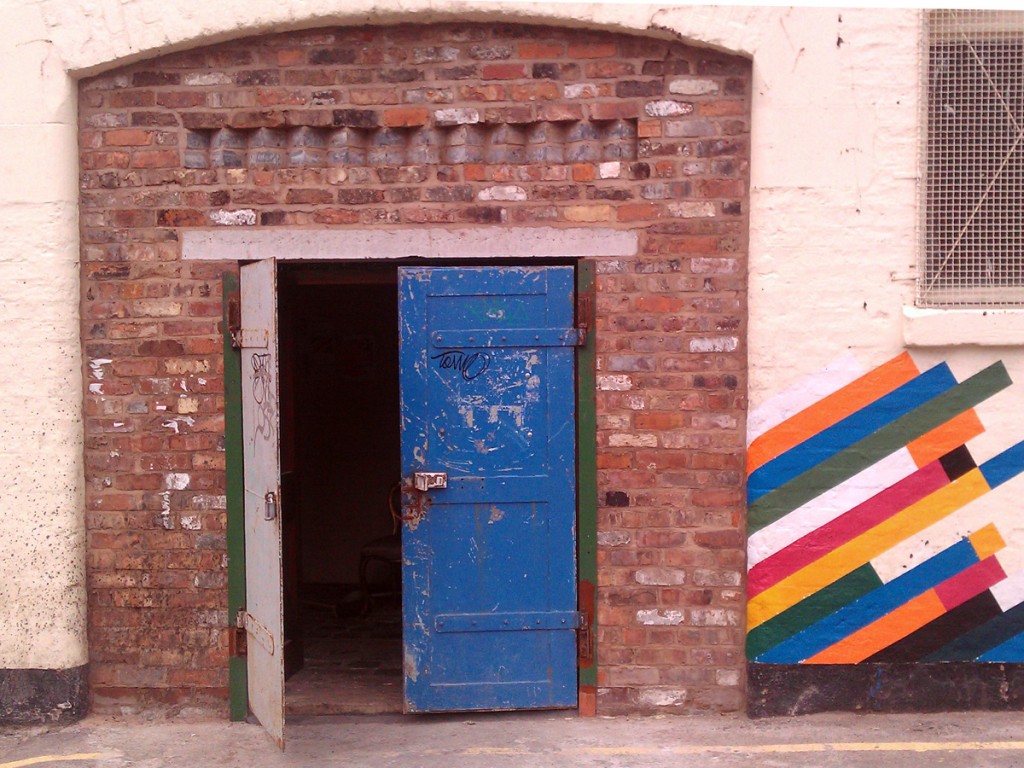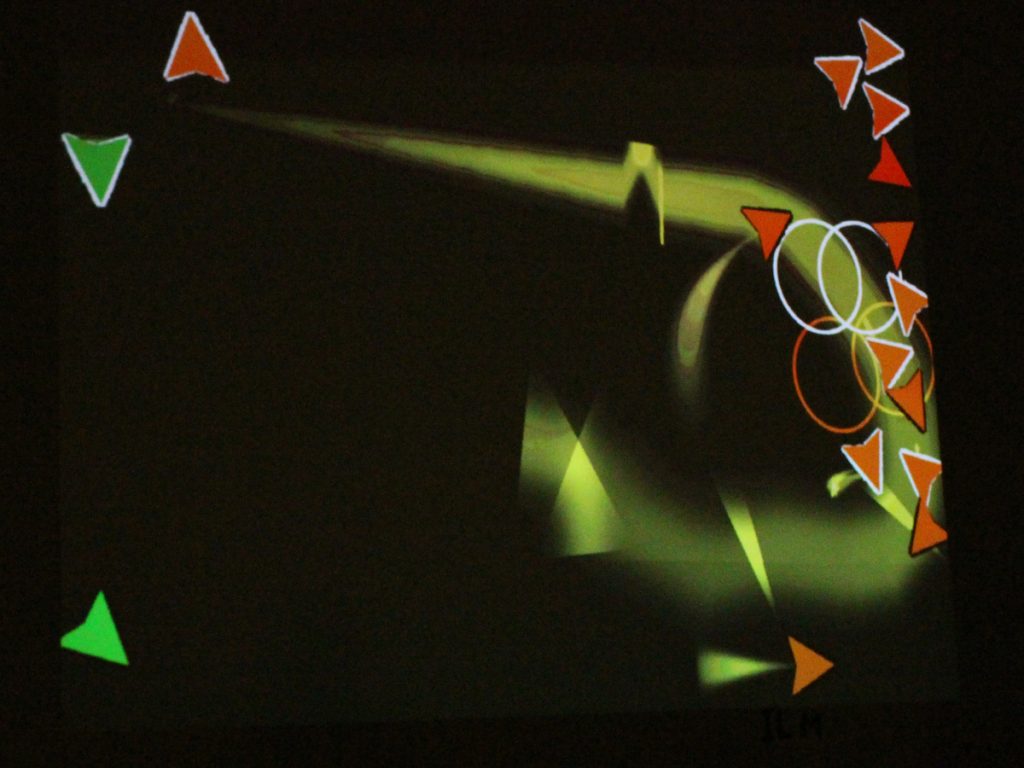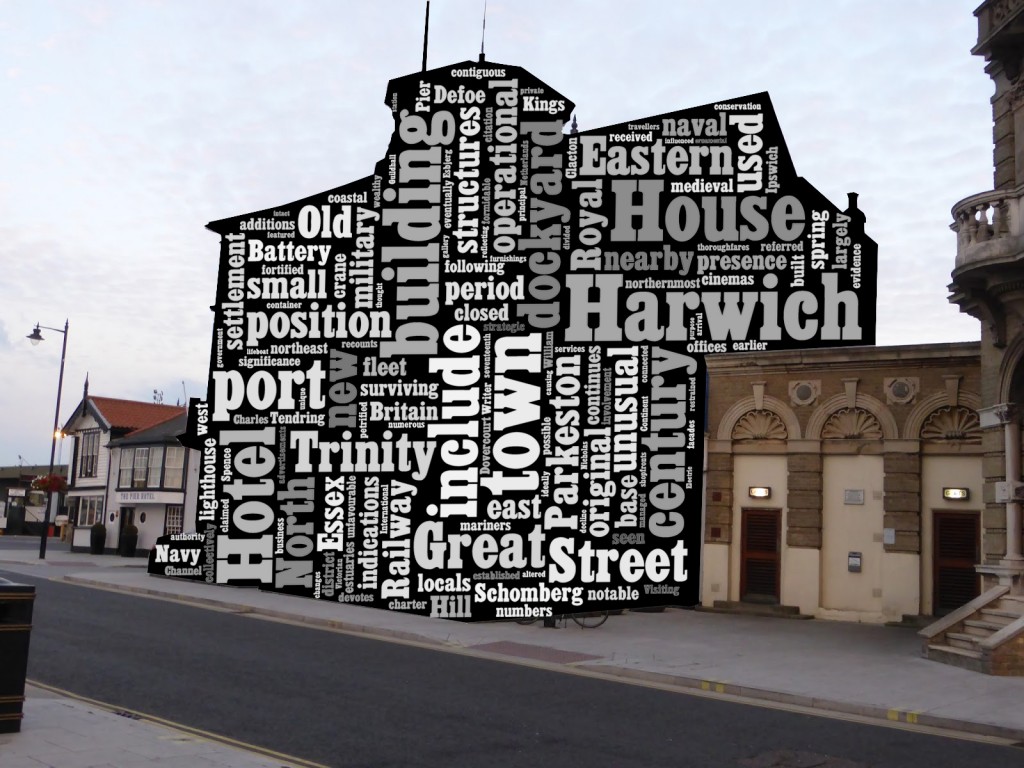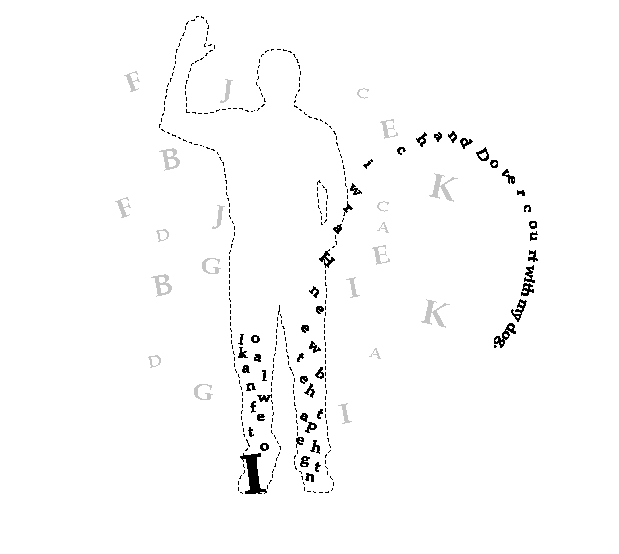I was up in Liverpool again recently for a 6 day residency as part of the art tech, boundary pushing Syndrome project curated and produced by Nathan Jones.
‘Choros’ was a collaboration between myself and sound artist Stefan Kazassoglou of Kinicho. Artist and poet, Steven Fowler gave a martial-arts derived performance for the opening event. The venue was 24 Kitchen St which is a fascinating project in its own right – a constantly evolving arts-centric space at the very beating heart of Liverpool’s Baltic Quarter, full of positiveness and an admirable can-do attitude.

Inspired by a visit to the venue and at all times spurred on by Nathan Jones, Stefan Kazassoglou and myself set ourselves the brief of creating a ‘roomstrument’ – an interactive space capable of responding visually and sonically to physical presence and movement, similar to the way in which a musical instrument responds to the physicality of being played. The roomstrument should be ‘playable’ by an individual or by a group. It would be an experimental piece designed to make performers of participants by stimulating and rewarding performative play. The name Choros came about as an anglicisation of the Greek word ‘Koros’ which happens to mean both dance and room – the synonymity appealed to us.
With the benefit of continued encouragement and support from Syndrome, we specified 3 projectors, 3 screens, 3 Kinect cameras and an 8 speaker ambisonic sound system to create a kind of open sided cube that would form the basis of an interactive space. In the end this relatively complex rig was constructed with a minimum of fuss by the Syndrome team and suppliers and we found ourselves facing a technically exacting set-up with plenty of calibrated communication required between video and audio processing. After the inevitable teething issues, we kickstarted our creative workflow and got a basic interactive audiovisual framework up and running on day 4 of the residency which only gave us 1 day to tweak before the incredible opening performance featuring Steven Fowler. The following day we opened up the work to the wider public…

At the centre of the installation was a lit ‘hotspot’ which we invited visitors to use a starting point to explore the interactive space. By reaching out towards or approaching any of the 3 screens from this hotspot, a series of ‘control cubes’ was revealed, each of which triggered a sound in respective ambisonic audio space. Thus a control cube in the bottom left part of a screen triggered an audio element spatially placed at the corresponding location. For the opening performance we used a series of Japanese martial arts-inspired vocal samples recorded by Steven Fowler himself.
Subsequent sound sets featured cello samples specially recorded by Stefan Kazassoglou and vocal samples from 20th Century philosopher and mathematician Alfred Korzybski discussing how abstraction creates an illusion of reality.
Moving around quickly inside the space triggered a rapid sucession of audio elements, resulting in a dramatic if slightly overwhelming mix of near-simultaneous sounds issuing from various locations in 3D space. Conversely, moving more carefully and identifying the points at which audio elements triggered gave visitors the chance to learn how to ‘play’ the work more as an actual ‘roomstrument’.
This experimental piece was a great success judging by the feedback and comments from visitors. As an artistic collaboration, I am sure it has inspired each one of us involved both at an individual and collaborative level. Certainly Stefan Kazassoglou and myself are keen to develop the ideas and techniques at the heart of Choros…
Massive thanks to all who helped and supported in spirit or in person.
Bye-bye Liverpool until next time…
















